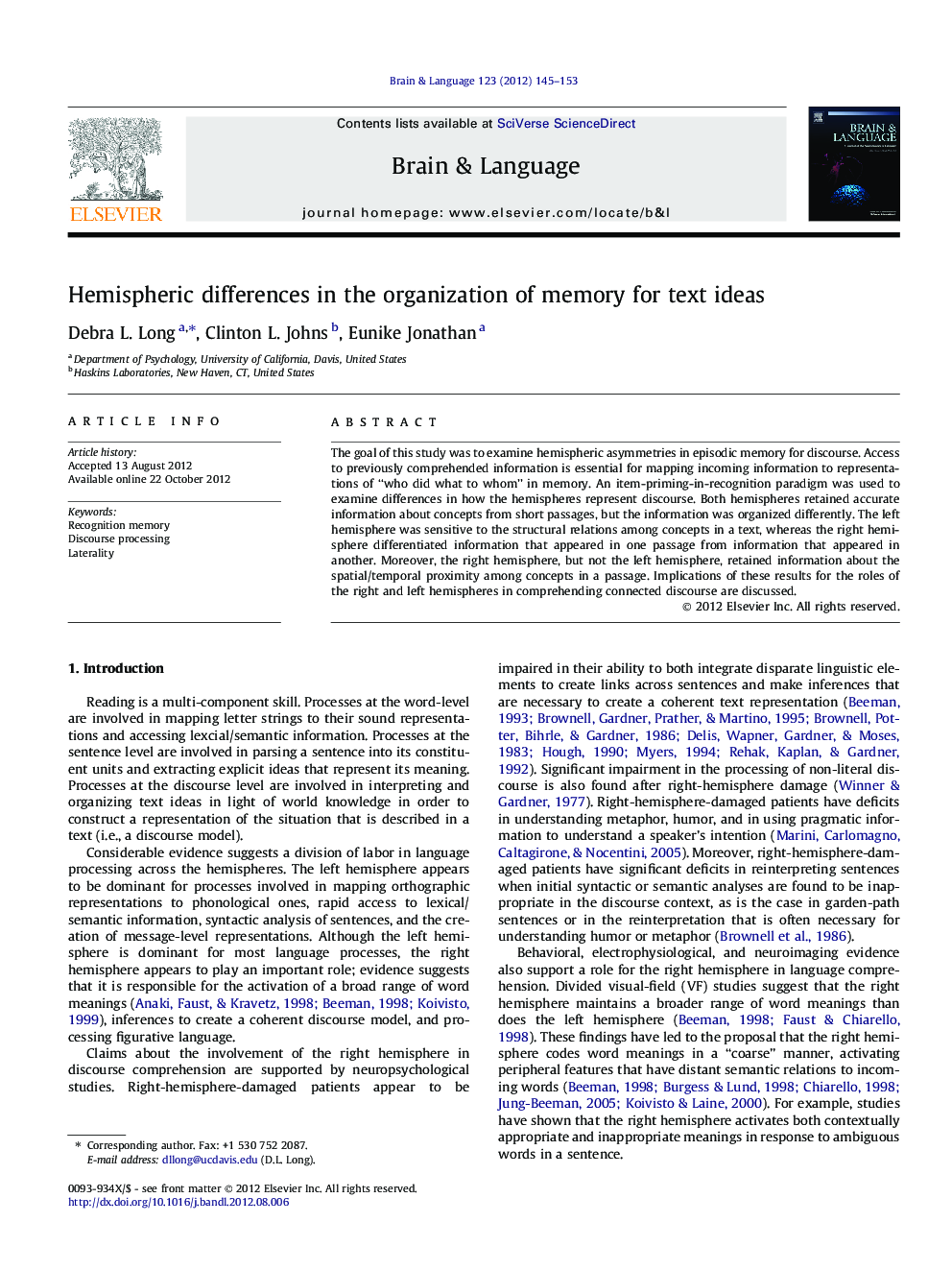| Article ID | Journal | Published Year | Pages | File Type |
|---|---|---|---|---|
| 925399 | Brain and Language | 2012 | 9 Pages |
The goal of this study was to examine hemispheric asymmetries in episodic memory for discourse. Access to previously comprehended information is essential for mapping incoming information to representations of “who did what to whom” in memory. An item-priming-in-recognition paradigm was used to examine differences in how the hemispheres represent discourse. Both hemispheres retained accurate information about concepts from short passages, but the information was organized differently. The left hemisphere was sensitive to the structural relations among concepts in a text, whereas the right hemisphere differentiated information that appeared in one passage from information that appeared in another. Moreover, the right hemisphere, but not the left hemisphere, retained information about the spatial/temporal proximity among concepts in a passage. Implications of these results for the roles of the right and left hemispheres in comprehending connected discourse are discussed.
► The goal was to examine hemispheric asymmetries in episodic memory for discourse. ► The left hemisphere was sensitive to structural relations among concepts. ► The right hemisphere differentiated information in one passage from others. ► The right hemisphere retained information about spatial/temporal proximity.
